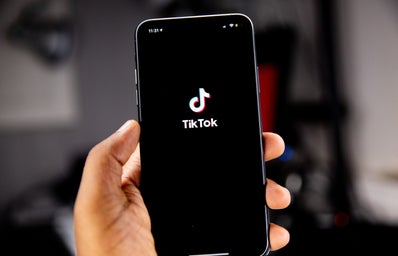TikTok, like many other social networking apps, has seen an increase in downloads and total users over the past two years. To better understand how this growth happened, it is essential to understand the history of TikTok. The year 2016 marked the official launch of TikTok, a then-social-networking app predominantly known to the Chinese market. In 2017, the app became open to users outside of China. In 2018, TikTok acquired Musical.ly, merging all current users to the TikTok platform. Fast forward to March of 2020, COVID-19 was declared a global pandemic. Large and small businesses experienced a high number of layoffs, forcing a ton of people to be unemployed at home. Additionally, schools across the world shut down and transitioned to remote learning, domestic and international travel was restricted and general fear caused people to stay indoors.
So, how does this relate to TikTok and mental health?
Since daily activities were put to a halt, it created a barrier. Individuals who previously escaped mental health issues by surrounding themselves with others were now left in isolation, young adults escaping toxic households through school attendance were now confined, while others simply responded with substance abuse or suffered in silence. This need for social connectedness can be attributed to the now one billion active monthly users on TikTok.
As with many things on TikTok that go viral, they begin as a trend or movement initiated by influencers or accounts with a big fan base. Surprisingly, mental health was no different. It became a huge topic of discussion on the app. To date, the hashtag #MentalHealth has 25.1 billion views on TikTok. User-generated content in this category features raw, unscripted and unedited experiences. Individuals post their symptoms to certain illnesses to raise awareness or find other users across the world who they can relate to and encourage. Other users run challenges where they encourage getting a piece of paper and manifesting certain self-care practices or personal goals as a form of accountability and users get to share an update.
Despite concerns about self-diagnosis, there has been a progression in opening up more conversations about seeking professional help. TikTok has even done its part in implementing in-app resources and guides. The listed initiatives are not exhaustive of the ones that exist but include location-based support, warning messages and opt-in screens. Qualified professionals with proper training also joined TikTok and the mental health awareness communities to provide factual knowledge and destigmatize seeking counseling or therapy. Dr. Julie Smith, a psychologist with over 3 million followers on TikTok, uses visual storytelling and other creative methods to engage, especially with millennials and Gen Z. Signs and coping mechanisms are just two of the topics she touches upon. She also provides family, friends and even regular individuals with the tools they need to seek help for others that may be dealing with or are in denial about dealing with such issues. More of her videos and others can be found on TikTok.
As TikTok continues to roll out campaigns with iconic brands and recognize things like National Mental Health Day, they took to Twitter to respond.
If you or someone you know is struggling with mental health, speak with someone today at the National Suicide Prevention Lifeline: 1-800-273-8255.
Want to see more HCFSU? Be sure to like us on Facebook and follow us on Instagram, Twitter, TikTok, YouTube and Pinterest!


